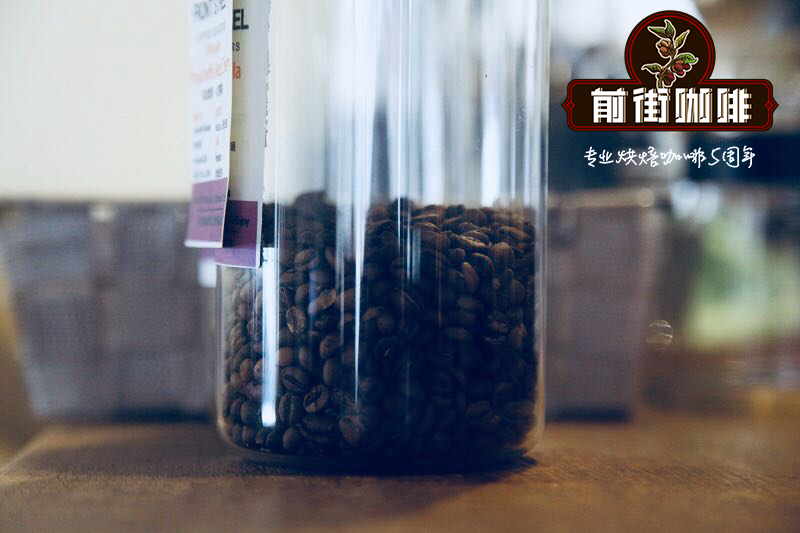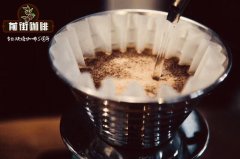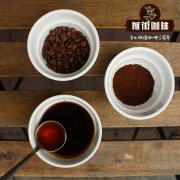Kenya Sika Coffee production processing method main flavor brewing parameters of Kenya Sika coffee

Professional coffee knowledge exchange more coffee bean information please follow the coffee workshop (Wechat official account cafe_style)
Kenya Sika treatment method (Coffee Processes)
It refers to the process of turning ripe red fruits into dried raw beans. Each treatment method has its own advantages and disadvantages, and is affected by the natural environment and demand of the producing area, so each producing area has its own suitable treatment method. This batch is solarization treatment.
Kenyan washing (Kenya Process)
After starting the process with the general water washing method, first ferment naturally for 12 hours (mainly with a PH value of 4.5-4.8), then wash off 80%-90% of the pectin layer, rinse in natural fermentation for 24 hours, then soak in water for 24 hours, dry and then enter the warehouse. Generally speaking, the standing time of water washing and fermentation varies from 12 to 24 hours, while in Kenya, raw beans are soaked for as long as 48 to 72 hours, so the treatment method is often marked with Kenyan water washing (Kenya Process). Kenya's unique double fermentation washing method will improve the original acidity and cleanliness again, with rich berry tonality, solid thickness, high sweetness and lively acidity.
Kenya is an important producer of boutique coffee in East Africa, but its output accounts for less than 5% of the global coffee market. It is auctioned every Tuesday in Nairobi, the capital, and exported to all parts of the world. Most of Kenya's coffee comes from small coffee farmers, each with about 0.5-3 acres of farmland, but local law requires farmers under five acres to join cooperative organizations. only a small number of local private organizations have the ability to set up estates.
Kenya Sikawam Gumar processing Plant (Wamuguma) is located in the Thika region of Kenya. Wamgumar processing Plant is located on the hillside of the Aberdel Mountains on the eastern boundary of the East African Rift Valley. It falls at an altitude of 1600-1800m. The beans are SL28 and SL34.
There are about 2000 farmers in Sika, Kenya. Half of the members send cherries to Wamgumar washing station for processing, which can handle about 250000 kilograms of coffee fruit every year. It is a medium-sized processing plant, although it is not as well-known as some star farms. However, in the cup test, the flavor is not only the traditional Kenyan black Galen or Wumei, but also more gentle and elegant floral notes. It's an amazing bean.
Arabica SL28 and SL34
In 1930, the unique Kenyan varieties SL28 and SL34, which were cultivated and named by Scott Laboratories laboratory, were born under a good primary forest ecosystem.
SL28 has a mixed lineage of French missionaries, mocha and Yemeni Tibica. The goal of cultivating SL28 was to mass produce coffee beans with high quality and resistance to diseases and insect pests. Although the yield of SL28 was not as high as expected, the copper leaf color and broad bean-shaped beans have great sweetness, balance and complex flavor, as well as remarkable citrus and plum characteristics.
SL34 is similar to SL28 in flavor, with a heavier, fuller and cleaner finish than SL28, except for its complex acidity and great sweetness. SL34 has French missionaries, bourbon, and more Tibica ancestry. Dou looks similar to SL28, but is more adaptable to sudden heavy rain.
Kenyan Sika coffee is graded according to particle size, and the common three grades are AA, AB and PB. AA sizes are 17 and 18 orders; AB are 15 and 16 orders; PB is a small round bean, usually a coffee fruit is made up of two coffee beans, round beans are only one bean in a coffee fruit. Although the classification is not the same, it does not mean that there will be a difference in flavor, but only a difference in particle size.
Important Notice :
前街咖啡 FrontStreet Coffee has moved to new addredd:
FrontStreet Coffee Address: 315,Donghua East Road,GuangZhou
Tel:020 38364473
- Prev

Blue Mountain Coffee planting altitude Jamaica Blue Mountain Coffee which estate is more famous and authentic
Professional coffee knowledge exchange more coffee bean information please follow the coffee workshop (Wechat official account cafe_style) the Blue Mountains are located in the eastern part of the island of Jamaica. The reason why this mountain has such a beautiful name is that a British soldier came to the island of Jamaica and saw that the peak was shrouded in blue light and shouted: look! The blue mountain! From then on, it was named "Blue Mountain". Actual situation
- Next

What is Pacamara Coffee beans, Pacamara Manor, Pacamara Flavor
Professional coffee knowledge exchange more coffee bean information please follow the coffee workshop (Wechat official account cafe_style) Guatemala is definitely a blessed place. Guatemala is home to more than 300 microclimates, which is the largest in the world, which is why few places in the world can produce a variety of high-quality coffee beans like Guatemala. At the same time, high altitude
Related
- Detailed explanation of Jadeite planting Land in Panamanian Jadeite Manor introduction to the grading system of Jadeite competitive bidding, Red bid, Green bid and Rose Summer
- Story of Coffee planting in Brenka region of Costa Rica Stonehenge Manor anaerobic heavy honey treatment of flavor mouth
- What's on the barrel of Blue Mountain Coffee beans?
- Can American coffee also pull flowers? How to use hot American style to pull out a good-looking pattern?
- Can you make a cold extract with coffee beans? What is the right proportion for cold-extracted coffee formula?
- Indonesian PWN Gold Mandrine Coffee Origin Features Flavor How to Chong? Mandolin coffee is American.
- A brief introduction to the flavor characteristics of Brazilian yellow bourbon coffee beans
- What is the effect of different water quality on the flavor of cold-extracted coffee? What kind of water is best for brewing coffee?
- Why do you think of Rose Summer whenever you mention Panamanian coffee?
- Introduction to the characteristics of authentic blue mountain coffee bean producing areas? What is the CIB Coffee Authority in Jamaica?

